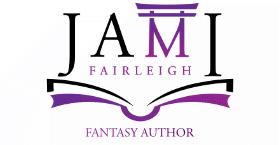
My (Current) Editing Process

Like skinning a cat (who does that??) there are a lot of ways to edit your writing. To deepen my understanding, I’ve read the editing sections of writing handbooks with great interest. I’ve also read a few books devoted to editing such as Edit Yourself and The Story Grid: What Good Editors know. I’ve talked about the editing process with other authors too. In all, I’ve realized that there is no single ‘right’ way to edit and that each writer follows the process that works best for them.
My process, or as the post title suggests, my current process is as follows.
1.
Yeah, that “one” above was left deliberately blank. Why? ‘Cause I don’t really have a current process. Well, I do, but I don’t. The easiest explanation is that I’m winging it because I’m not sure what my process is, or should be. Yet.
The things I’ve learned about Editing
A.) Don’t edit while you write. That seems so obvious to me now, but I think this is something I was stuck on as a writer for decades. I have a number of trunked novel ideas that have one, two, or perhaps three sterling paragraphs. These paragraphs shine. I tweaked and wordsmithed and polished these paragraphs to the point where the words hover angelically off of the page. I utilize my writing skills and ability beautifully in these paragraphs.
The danger of these marvelous examples of writing genius is that the next paragraph to follow never lives up to what proceeded it. And the anguish of trying to craft the next perfect paragraph fully exhausts the muse that had encouraged me to start writing the story. As the muse expires, so too does the story die.
[bctt tweet=”Editing as I write is the number one way I can kill a story idea before it can become a book.” username=”jamifairleigh”]
B.) Once I have a draft, I personally need to read a clean copy and handwrite my comm ents. I used to do this with paper but quickly realized that as each wordy rambling draft consumes a small tree, I had to find a different approach. This is when I invested in a paper tablet called the reMarkable. When I use my reMarkable, I’m able to make hand edits as if I’m holding paper, and bonus, no trees are harmed in the making of the draft. Bonus #2, the reMarkable is extremely portable so I can take my book to distraction-free zones and work.
ents. I used to do this with paper but quickly realized that as each wordy rambling draft consumes a small tree, I had to find a different approach. This is when I invested in a paper tablet called the reMarkable. When I use my reMarkable, I’m able to make hand edits as if I’m holding paper, and bonus, no trees are harmed in the making of the draft. Bonus #2, the reMarkable is extremely portable so I can take my book to distraction-free zones and work.
I like to type and think well as I type but I’ve found I can’t edit effectively with a keyboard in my grasp because I’ll begin to wordsmith (see point A) and will get easily distracted. I also find that its harder to read my draft and edits without tracked changes on.
C.) This is the newest part of my evolving editing process. I exported my draft from Scrivener to send it to my editor in an MS Word document, per her request. She made comments and edits using tracked changes that do not import back into Scrivener.
Previously, I’d make a copy of my previous draft in my Scrivener project, then edit the new copy as my next draft. Now, I’m making all of my edits in Word so I can resend the next version (with comments and tracked changes) back to my editor. This time, I addressed her comments in the document, then exported a clean copy (with All Markup) to a pdf and imported that into my reMarkable tablet. That’s where I am currently. I’ll apply the changes to my Word document and send it back to the editor once I’m done reading and making notes.
Editing is an Iterative Process

Somewhere in this workflow, I’ll also need to incorporate comments from my beta readers. I’m not sure how that’s going to work yet either. I’ve seen options such as creating a pdf that can be read on an eReader or printed, sending a live Word document, sending a read-only Google document, or sending a live Google document to them. I hope no one asks for a hard-copy version!
Because I don’t how many drafts I’ll need, my editing process is still murky and will likely continue to evolve as this book gets closer to publication. What’s your process?
Header Photo by Jess Bailey on Unsplash

One thought on “My (Current) Editing Process”